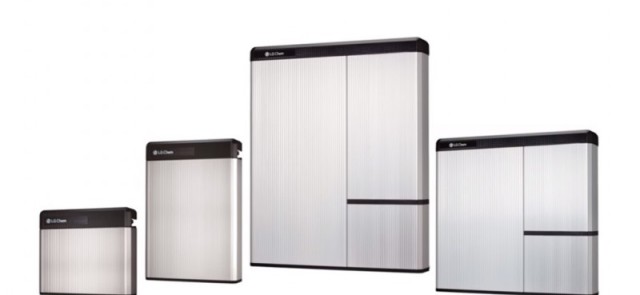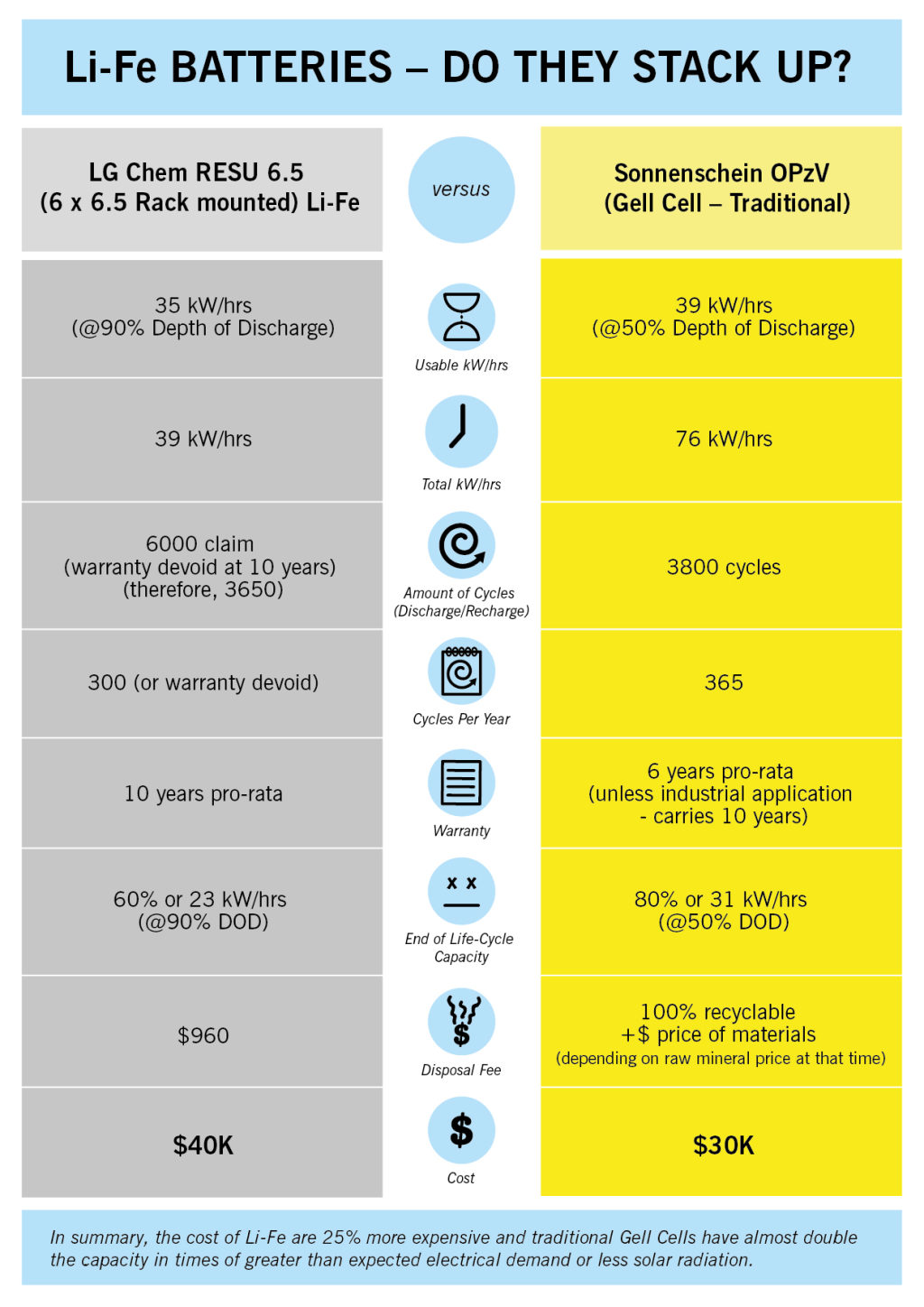Do Li-Fe Batteries Stack Up?

As a solar installer and designer, I receive many enquiries regarding Lithium-Ion (Li-Fe) batteries.
Li-Fe batteries are popular, but it’s worthwhile to consider the more ‘traditional’ Gell Cell deep cycle batteries; I see many cases where Gell Cell may be a more practical solution for someone wanting to invest in a stand alone solar power system.
Most Li-Fe batteries are designed for the “Hybrid” method of using solar power. Hybrid is a combination of solar, grid and battery back-up. In a Hybrid system, batteries rely on the grid to recharge if there is not sufficient solar energy: Li-Fe batteries only contain a minimal amount of storage i.e. 10 kW/hrs and may not be sufficient for a full off grid solar system.
The standard solution for Li-Fe batteries minimal amount of storage is to simply add more of them – which works, but there are options that may be competitive for those seeking the most efficient battery storage for their needs:

If you already have an existing solar power system and are considering a “Hybrid” type of battery storage, a traditional Gell Cell deep cycle battery may be more suitable for your needs. Consider these points:
Most systems I install for the Off-Grid market typically contain between 25 – 75 kW/hrs of storage.
From a design perspective, this storage gives a system,
- Less dependence on a back-up generator
- Increases the overall life-expectancy of the batteries
- Allows enough energy stored for days when less solar radiation is experienced
Additionally, it must be noted that Li-Fe batteries are 25% more expensive than traditional Gell Cell deep-cycle batteries.
If you have an existing solar array connected to the grid and you are seriously considering battery storage to augment that system, traditional Gell Cell deep-cycle batteries are an excellent option.


